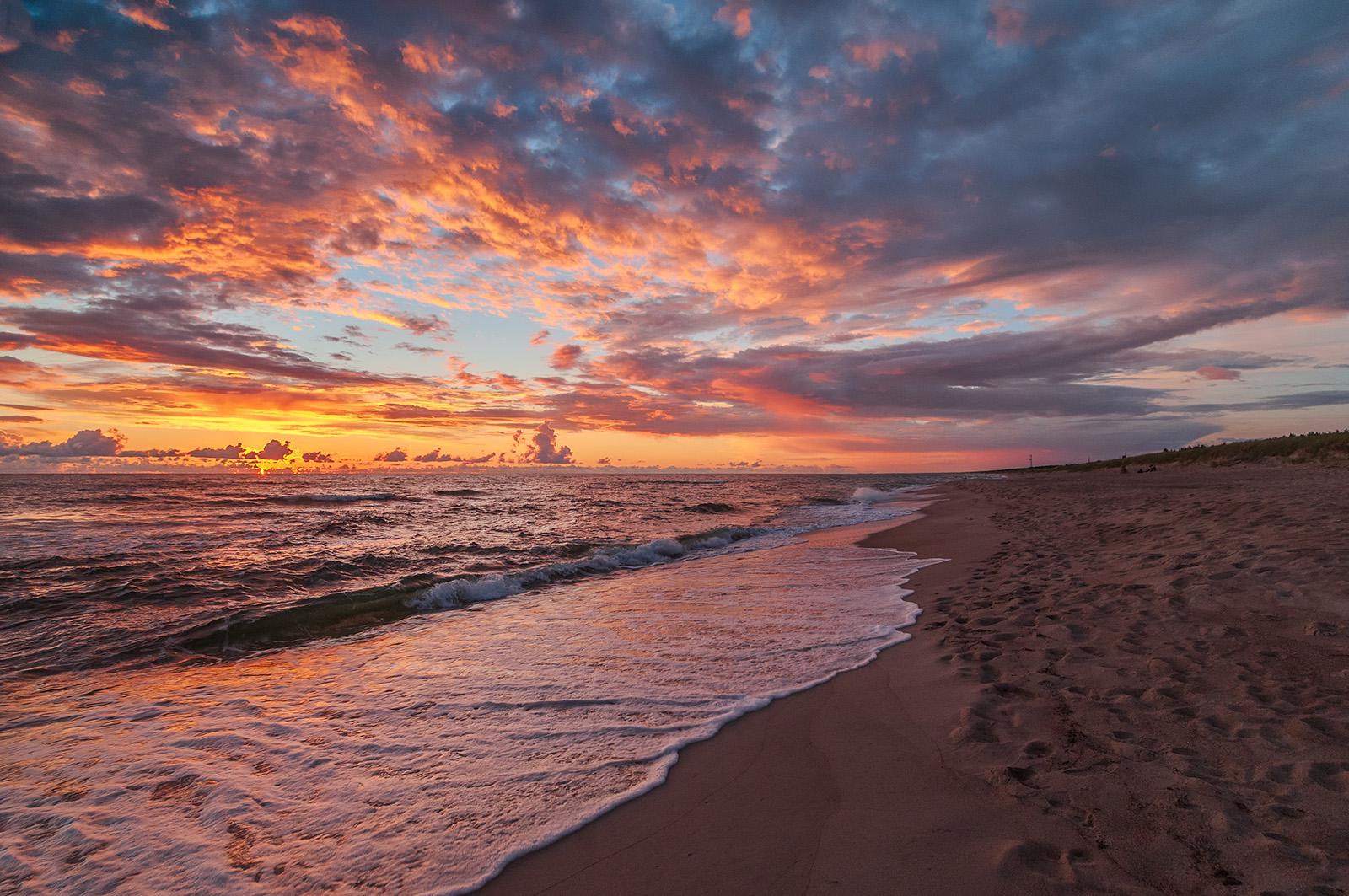



The Curonian Spit is a 98-kilometre long, thin, curved sand-dune spit that separates the Curonian Lagoon from the Baltic Sea. It is a UNESCO World Heritage Site shared by Lithuania and Russia.
May to September: This is the best time, with mild temperatures (15–25°C) and plenty of sun for hiking, biking, and beach trips.
July and August: Warmest and most popular months—perfect for swimming and boat tours.
Off-season (October to April): Quieter, with cold winds and limited services, but offers solitude and dramatic coastal views.
From Klaipėda (Lithuania):
Ferry: Take the passenger or car ferry from Klaipėda to Smiltynė (5–10 minutes).
Bus or car: From Smiltynė, drive or take a local bus down the spit (toward Nida and other villages).
By bike: The entire spit is bike-friendly with scenic routes.
Note: The northern part is in Lithuania; the southern part is in Kaliningrad, Russia. You’ll need a visa to cross into the Russian side.
Dead (Gray) Dunes: Majestic drifting sand dunes near Nagliai, partially burying ancient villages.
Nida Dunes (Parnidis Dune): Towering dunes with sweeping views of the Baltic Sea and Curonian Lagoon.
Hill of Witches (Juodkrantė): Forest trail dotted with whimsical wooden sculptures from Lithuanian folklore.
Nida Lighthouse: A great lookout over the dunes and the lagoon.
Thomas Mann Museum: Summer house of the Nobel laureate writer, located in Nida.
Hiking and nature walks: Numerous trails through dunes, pine forests, and coastal areas.
Birdwatching: A major bird migration route, especially around Ventės Ragas.
Biking: A 50+ km bike path runs from Smiltynė to Nida.
Swimming and sunbathing: Beaches along the Baltic coast are clean and uncrowded.
Kayaking or boat tours: Explore the Curonian Lagoon by water.
Nida: Most popular and well-equipped village with hotels, guesthouses, and vacation rentals.
Juodkrantė: Smaller and quieter, ideal for nature lovers.
Preila & Pervalka: Tiny, peaceful villages with cozy cabins and homestays.
Camping: Some campgrounds are available for tents and campers near Nida.
Smoked fish: Local delicacy—try perch, pike, or eel.
Traditional Lithuanian cuisine: Including cold beet soup (šaltibarščiai), potato pancakes, and zeppelins (cepelinai).
Nida restaurants: Many offer outdoor seating with lagoon views; try spots like Tik Pas Joną or Restoranas “Nerija”.
Beach kiosks: Great for snacks, coffee, and ice cream in summer.
Fisherman’s traditions: Reflected in wooden boat carvings and weathervanes on houses.
Kuronian weathervanes: Colorful, symbolic wind vanes historically used for ship identification—unique to this region.
Art and crafts: Nida and Juodkrantė often host local art exhibits and amber jewelry workshops.
Thomas Mann culture week: Held every July in Nida with music, lectures, and literary events.
The Curonian Spit is a magical blend of nature, heritage, and tranquility—ideal for eco-tourists, history lovers, and those seeking a peaceful seaside escape.